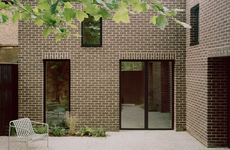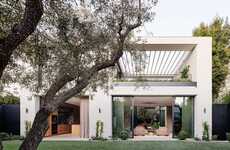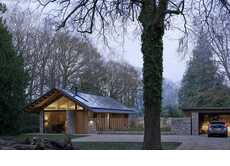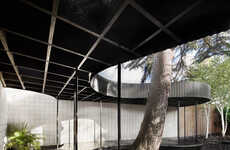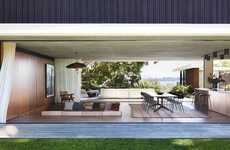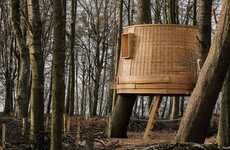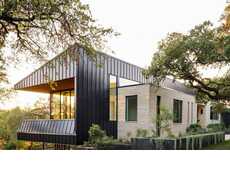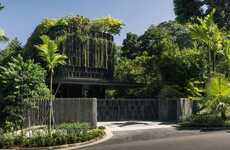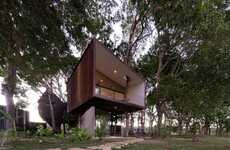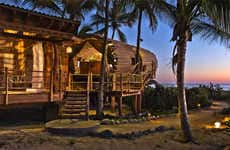
Edgley Design's 'Pear Tree House' Protects a 100-Year-Old Tree
References: edgleydesign & archdaily
'Pear Tree House,' a residence built by Edgley Design, is a product of both environmental necessity and preservation. The family home has a courtyard that surrounds and protects a pear tree that's more than 100 years old.
Pear Tree House is built on a site that was previously a Victorian fruit orchard. While most of the orchard growth has since died or been moved, the pear tree on the property still flourishes. Rather than having the pear tree moved away, Edgley Design chose to build Pear Tree House around it, keeping the elder tree as the centerpiece of the property.
Pear Tree House is built on a long and narrow property, with the pear tree in the courtyard at the very center of the building and the other rooms extending out towards the front and the back.
Pear Tree House is built on a site that was previously a Victorian fruit orchard. While most of the orchard growth has since died or been moved, the pear tree on the property still flourishes. Rather than having the pear tree moved away, Edgley Design chose to build Pear Tree House around it, keeping the elder tree as the centerpiece of the property.
Pear Tree House is built on a long and narrow property, with the pear tree in the courtyard at the very center of the building and the other rooms extending out towards the front and the back.
Trend Themes
1. Environmentally-minded Architecture - Designing buildings around existing natural elements, like the pear tree in Pear Tree House, showcases the potential for sustainable and preservation-focused architecture.
2. Heritage Preservation - Preserving historical or significant elements within a building, such as the 100-year-old pear tree, highlights opportunities for unique and culturally significant design projects.
3. Integration of Nature - Incorporating living elements, like the courtyard with the pear tree, into architectural designs creates a seamless integration of nature and built environments.
Industry Implications
1. Architecture - Architects and builders can embrace environmentally-focused design principles, like preserving natural elements, to create sustainable and innovative structures.
2. Real Estate Development - Real estate developers can explore opportunities to preserve and enhance the natural features of a property, adding value and uniqueness to their projects.
3. Landscaping - Landscaping professionals can collaborate with architects to create cohesive and functional designs that integrate existing natural elements, such as mature trees, into outdoor spaces.
5.4
Score
Popularity
Activity
Freshness

